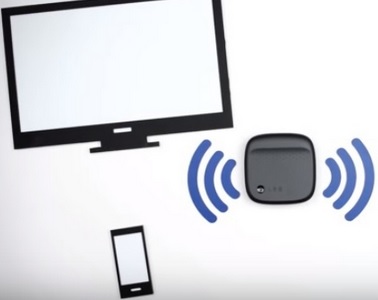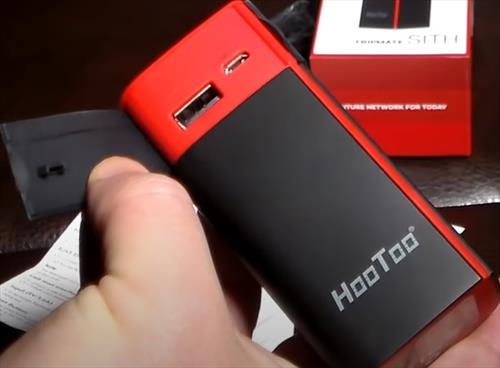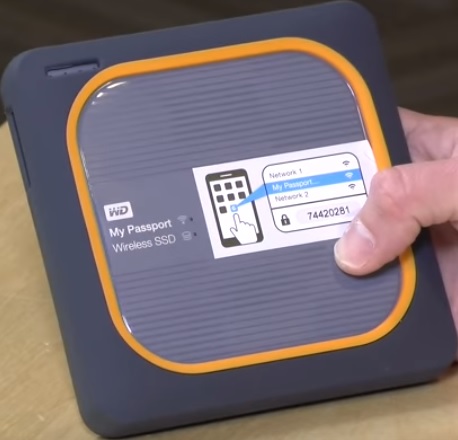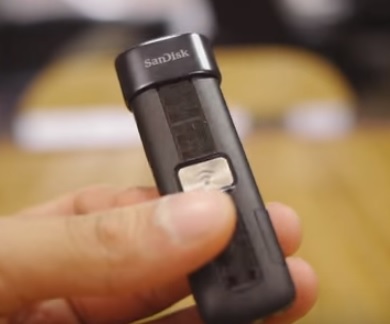
There are many options for a wireless storage device with different hardware and features.
Storing pictures, music, videos, or any files wirelessly can be done in few different ways.
Some are more static devices not meant to be moved about much while others are portable giving a user on-the-go functionality.
So let’s look at some options available to see is if one is a good fit for you.
Best Devices for Wireless Storage and File Transfers
- Wireless Filehub Travel Routers
- Wireless Hard Drives
- Wireless Flash Drives

Travel routers are built to manage WiFi connections while traveling but can be used anywhere wireless file management is needed.
The functionality is broad, from streaming to multiple devices, to managing file storage.
A unit can also be set up at home or an office and manage wireless file transfers.
Having a small file hub that can manage file transfers from multiple devices wirelessly is nice to have.
Storage is done with SD-Cards or flash drives that plug into USB slots. A flash drive or SD-Card can be quickly swapped out for more space.
A travel router is a good fit in a crowded environment where many people need to access files. For example, one person can stream a song or video while another is looking at pictures or backing up files.
The downside to a travel router is having to buy your own SD-Cards and flash drives since most have limited to no internal storage.
This makes them low-cost units since no expensive storage is built-in.
HooToo is a popular option and makes several different units such as the HooToo Filehub Router.
HooToo Filehub on Amazon
HooToo Filehub, Wireless Travel Router, iPhone iPad Portable SSD Hard Drive Reader, Photo Backup Device, 10400mAh External Battery Pack Travel Charger – TripMate Titan

Wireless hard drives are a good option for home use or even for those who need mobility.
Hard drives have the advantage of giving a user more storage space compared to most other types of formats at a reasonable cost.
Units can be bought with more or less storage depending on the need, of course, the price will match this.
Since hard drive technology has been with us for a long time the cost to the amount of storage space is usually the cheapest.
Large 2TB-4TB or bigger units can be bought that can store a massive amount of files.
Most will have a built-in battery to give portability.
Popular options include the WD My Passport Wireless or the Seagate Wireless Plus.
WD My Passport Wireless SSD Drive on Amazon
WD 500GB My Passport Wireless SSD External Portable Drive, WiFi USB 3.0, Up to 390 MB/s – WDBAMJ5000AGY-NESN

Wireless flash drives are small making them very portable.
The amount of storage can be limited compared to a hard drive and currently range around 32Gb-200GB.
This is still a large amount of space which can easily be copied to a computer at home.
Since they are small mobility is the biggest selling point with one able to easily fit in a pocket.
Units have a built-in battery making them a nice small go-to wireless solution for files while on-the-go.
A popular unit is the SanDisk Connect Wireless Stick which can be bought in different sizes.
SanDisk Connect on Amazon
SanDisk 32GB Connect Wireless Stick Flash Drive – SDWS4-032G-G46
Summary
Being able to wirelessly backup data or stream from a storage device is a nice option to have.
There are many devices available so be sure to read all the features of any unit to be sure it fits your set up.
Travel routers are a good option and work in a variety of setups working as a wireless hub for file transfers.
For those who need a large amount of storage space, a WiFi hard drive may be a better solution.
Wireless flash drives give a user maximum portability with a unit quickly carried about in a pocket and used on the go.
Whichever unit is chosen, be sure to read the reviews on Amazon or elsewhere to be sure a unit is a good fit for you.



With the File Hub it seems finally some companies are coming up with real products of something I asked for… about 5 years ago or so. xD
During my short stint as photographer I always wanted an external storage device that allowed me to quickly dump an SD card there with the push of a button, no need to go through smartphone apps or something like that.
But they are charging a bit too much for the functionality…
Hello! There’s very little straight answers I can find out about the WD My Passport drive and the non SSD model. I’m trying to decide which one to actually get. One thing that has never been covered is Plex Workflow. I’m a truck driver. I don’t really like hauling my laptop and drives around. Theoretically what I’m thinking is hooking the drive up to the server and and optimizing movies and shows onto the drive for mobile viewing. But very little has been said about what MBPS to optimize at for the iPad to have the capability to stream it. Also this is an independent server from the main server. But so is Syncing to an iOS or android device. So wouldn’t the watch status update when plugged back into the main server? What’s the difference in what the 2 drives can stream? I’m leaning towards the 4TB non SSD because 4 TB’s. I probably just need to buy one and do tests then upload a video. Because I’ve found very little about the mechanics of it. For instance could sync work in any capacity? Most of us have our iTunes running through Plex. Seems to me you should be able to connect your phone and sync an album. But these are all unknowns. Because the most I’ve seen is it works really well or it’s garbage. I have a feeling the people that love it are Plex fanatics and will make it work the way they’re wanting regardless. If anyone had both drives and have thoughts on MBPS between them that would be awesome!
I need to use a PC most of the time and using the SAMBA type of networking. but was curious what are the transfer speeds from computer to a USB stick that is in the HOOTOO? speeds in mb/s of course….
if you are using a fast USB drive you should be able to copy 32GB in roughly 7 – 10 minutes.